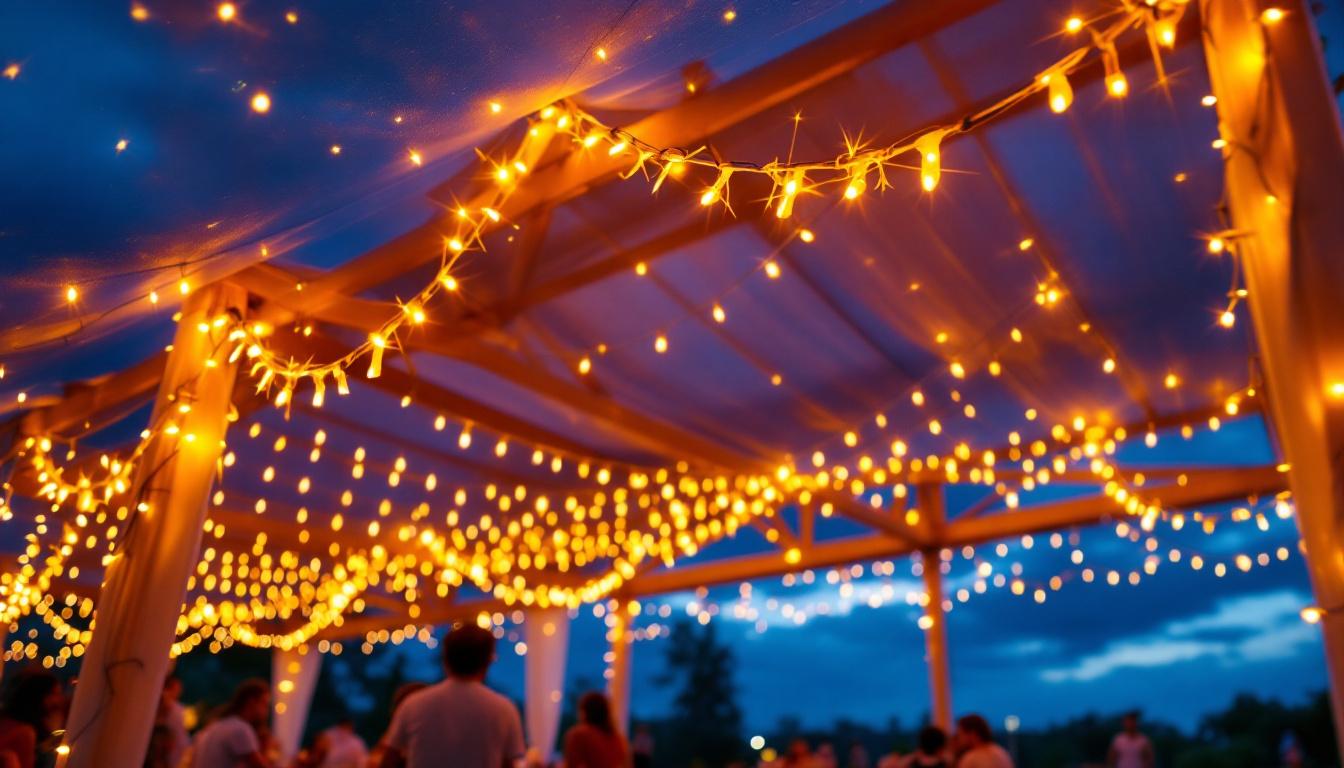
In recent years, the lighting industry has witnessed a significant transformation, with can lights, also known as recessed lighting, emerging as a pivotal element in modern design and functionality. These fixtures, which are installed into a hollow opening in the ceiling, provide a sleek and unobtrusive lighting solution that enhances both residential and commercial spaces. As the demand for versatile and energy-efficient lighting continues to grow, understanding the importance of can lights becomes essential for lighting contractors and designers alike.
The concept of recessed lighting is not new; however, its application and technology have evolved dramatically. Initially, can lights were primarily used in commercial settings, where their ability to provide ambient lighting without taking up visual space was highly valued. Today, they have found their way into homes, transforming the way spaces are illuminated.
One of the primary reasons for the rising popularity of can lights is their design flexibility. They can be installed in various locations, including kitchens, living rooms, and even outdoor areas. This versatility allows homeowners and designers to create unique lighting schemes that enhance the aesthetic appeal of a space. Whether it’s highlighting architectural features or providing general illumination, can lights can be strategically placed to achieve the desired effect. Additionally, the ability to use dimmer switches with can lights allows for further customization of the ambiance, enabling homeowners to adjust the brightness according to the time of day or occasion, thus creating a more inviting atmosphere.
Advancements in lighting technology have also played a crucial role in the growth of can lights. The introduction of LED technology has revolutionized the industry, making can lights more energy-efficient and longer-lasting. Unlike traditional incandescent bulbs, LEDs consume significantly less energy, which translates to lower electricity bills and a reduced carbon footprint. Furthermore, the lifespan of LED bulbs can exceed 25,000 hours, making them a cost-effective choice for both contractors and homeowners. Beyond energy efficiency, modern can lights often come equipped with smart technology, allowing users to control their lighting through mobile apps or voice commands. This integration with smart home systems not only enhances convenience but also offers the ability to program lighting schedules, creating an automated environment that can adapt to daily routines or enhance security when homeowners are away.
Can lights offer numerous benefits that cater to the needs of modern consumers. Their practicality, combined with aesthetic appeal, makes them an attractive option for various applications.
One of the standout features of can lights is their space-saving design. Unlike traditional light fixtures that hang from the ceiling, recessed lights are installed flush with the ceiling surface. This design not only saves space but also creates a clean and streamlined look. In smaller rooms, where every inch counts, can lights can make a significant difference by providing ample lighting without overwhelming the space. Moreover, this unobtrusive installation allows for greater flexibility in room design, enabling homeowners to utilize wall space for art or furniture without the distraction of bulky light fixtures.
Can lights can significantly enhance the ambiance of a room. By strategically placing these fixtures, a contractor can create layers of light that add depth and warmth to a space. For instance, using dimmable can lights in a living room can allow homeowners to adjust the brightness according to the time of day or the mood they wish to set. This level of control over lighting contributes to a more inviting and comfortable environment. Additionally, the versatility of can lights means they can be used to highlight architectural features or artwork, drawing attention to specific areas and creating a focal point that enriches the overall aesthetic of the room.
In addition to aesthetic benefits, can lights offer improved functionality. They can be used for task lighting in kitchens, where precise illumination is crucial for cooking and food preparation. In home offices, recessed lighting can help reduce eye strain, creating a more productive work environment. The ability to direct light where it is needed most makes can lights a practical choice for various applications. Furthermore, their energy-efficient LED options not only provide bright, long-lasting light but also help in reducing electricity bills, making them an environmentally friendly choice for homeowners looking to minimize their carbon footprint.
Can lights are incredibly versatile and can be adapted to suit a wide range of spaces and purposes. From residential settings to commercial environments, their ability to blend seamlessly into any decor makes them a popular choice among designers and architects alike. In retail spaces, for example, can lights can be used to highlight merchandise, creating an inviting shopping experience that draws customers in. In addition, they can be employed in outdoor settings, such as patios or decks, providing essential lighting for evening gatherings while maintaining a stylish appearance. This adaptability ensures that can lights remain a relevant and sought-after lighting solution in various contexts.
While can lights offer numerous advantages, proper installation is critical to ensure their effectiveness and safety. Lighting contractors must consider several factors to achieve optimal results.
The height of the ceiling is a crucial factor when planning the installation of can lights. In spaces with lower ceilings, shallow can lights may be necessary to avoid any obstruction. Conversely, in rooms with higher ceilings, deeper can lights can be used to achieve the desired light distribution. Additionally, the spacing between fixtures should be carefully calculated to ensure even illumination throughout the space.
When installing can lights, attention must be paid to the electrical wiring and placement. It is essential to ensure that the wiring is up to code and that the fixtures are correctly positioned to avoid shadows and dark spots. Furthermore, contractors should consider the use of compatible dimmer switches, which can enhance the functionality of the lighting system.
The lighting industry is continually evolving, with new trends emerging that shape the way can lights are designed and utilized. Staying informed about these trends is vital for lighting contractors looking to meet the demands of their clients.
One of the most significant trends in the lighting industry is the integration of smart technology. Smart can lights can be controlled remotely via smartphones or voice-activated devices, allowing users to adjust brightness, color temperature, and even create lighting schedules. This level of control not only enhances convenience but also promotes energy efficiency, as users can turn off lights when they are not needed.
Another trend gaining traction is the availability of various color temperature options for can lights. Homeowners are increasingly opting for warmer tones that create a cozy atmosphere, particularly in living areas. Conversely, cooler temperatures are preferred in workspaces, where focus and clarity are essential. Offering a range of color temperature options allows contractors to cater to diverse client preferences.
Architectural integration is another trend that highlights the importance of can lights in modern design. More architects and designers are incorporating recessed lighting into their plans, using it to accentuate features such as crown molding, artwork, and built-in shelving. This approach not only enhances the overall aesthetic but also emphasizes the craftsmanship of the space.
Despite the growing importance of can lights, the lighting industry faces several challenges that contractors must navigate to ensure successful projects.
As energy efficiency becomes a priority, regulations surrounding lighting products are becoming increasingly stringent. Contractors must stay informed about local and national energy codes to ensure compliance. This may involve selecting fixtures that meet specific efficiency standards or implementing energy-saving practices during installation.
The lighting industry is highly competitive, with numerous manufacturers and contractors vying for clients’ attention. To stand out, contractors must offer exceptional service, stay updated on the latest trends, and provide high-quality products. Building strong relationships with suppliers can also help contractors access the best materials and technologies available.
The future of can lights in the lighting industry looks promising, driven by ongoing advancements in technology and design. As consumers continue to seek energy-efficient and aesthetically pleasing solutions, the demand for can lights is expected to rise.
Customization is likely to play a significant role in the future of can lights. As consumers become more discerning about their lighting choices, the ability to tailor fixtures to specific needs will be paramount. This may include customizable color temperatures, beam angles, and even smart features that cater to individual preferences.
Sustainability is another critical factor shaping the future of the lighting industry. As environmental concerns grow, manufacturers are likely to focus on producing eco-friendly products. This could involve using sustainable materials, reducing waste during production, and designing fixtures that are easier to recycle at the end of their lifespan.
Can lights have emerged as a vital component in the lighting industry, offering unmatched versatility, energy efficiency, and aesthetic appeal. For lighting contractors, understanding the importance of these fixtures is essential to meet the evolving needs of clients. By staying informed about trends, addressing challenges, and embracing future opportunities, contractors can position themselves for success in a rapidly changing landscape. As the demand for innovative lighting solutions continues to grow, can lights will undoubtedly play a central role in shaping the future of illumination.
Ready to elevate your lighting projects with the unmatched versatility and energy efficiency of can lights? Look no further than LumenWholesale, where we provide lighting contractors with top-quality, spec-grade lighting products at unbeatable wholesale prices. Our extensive selection is designed to meet the highest industry standards, ensuring you get reliable, high-performance lighting for every project. Plus, with free shipping on bulk purchases, you can obtain premium lighting solutions at the best value — without hidden fees or compromises. Don’t let inflated markups dim your project’s potential. Experience the perfect blend of quality, affordability, and convenience. Wholesale Lighting at the Best Value is just a click away.

Discover why fluorescent kitchen fixtures are essential for any successful lighting project.

Discover the essential fluorescent light connection diagram to boost your lighting projects.

Discover why understanding light fixture max wattage for LEDs is crucial for every lighting contractor.

Discover why lighting contractors should prioritize outdoor canopies with lights in their projects.